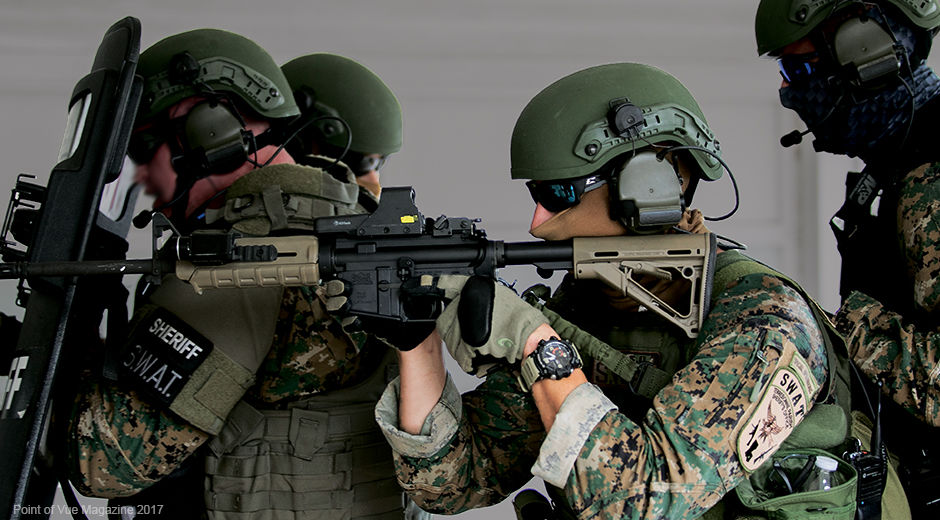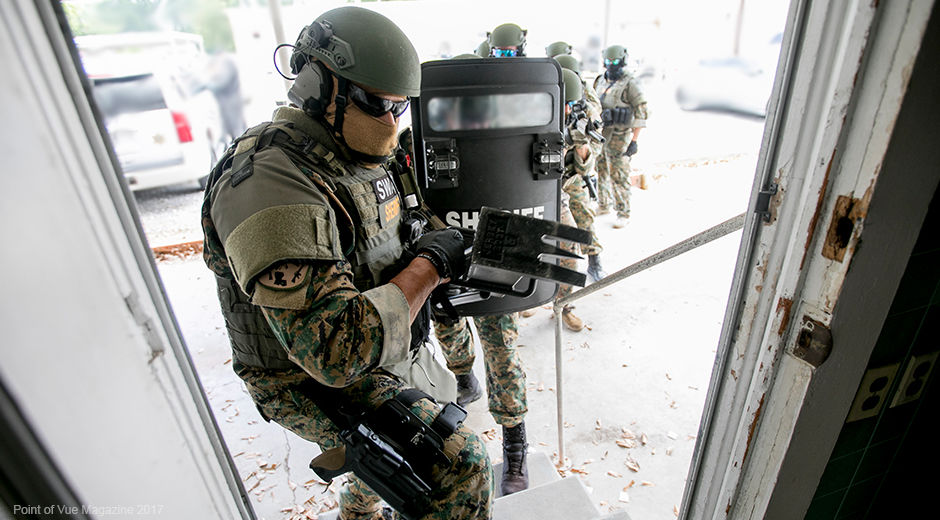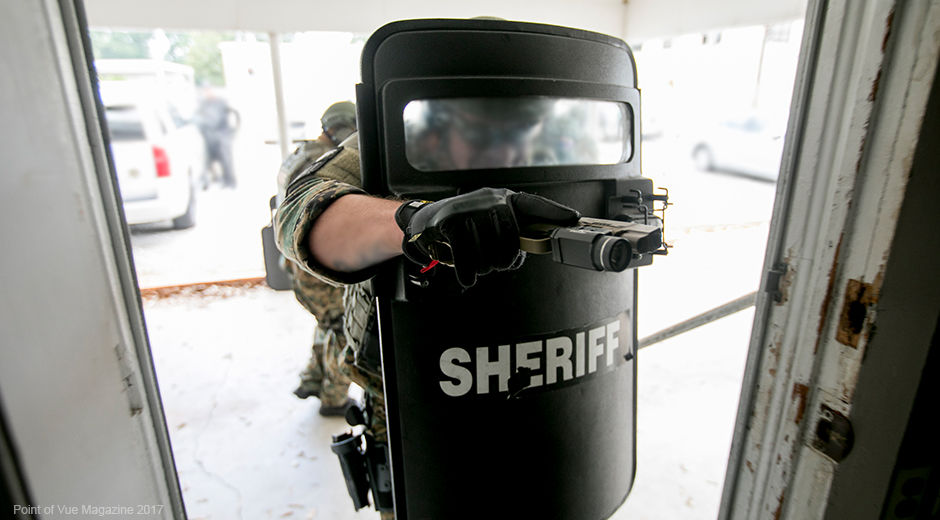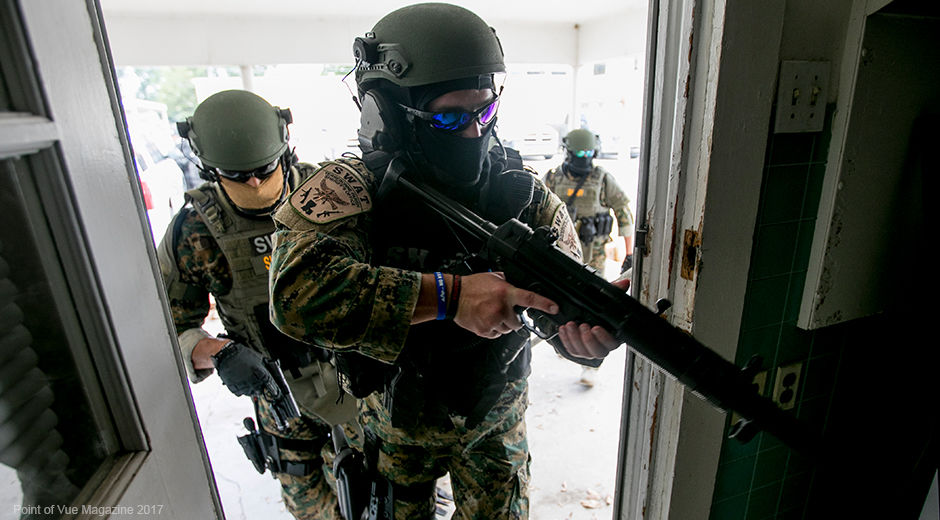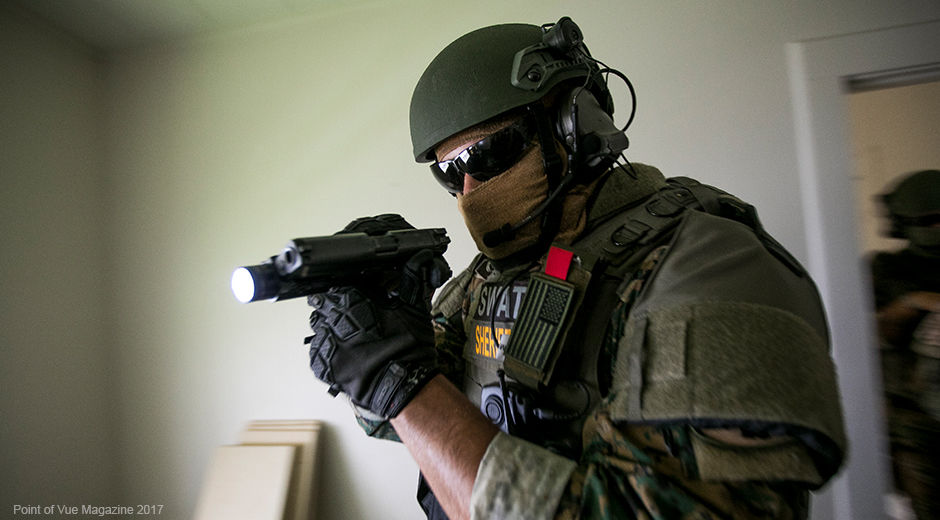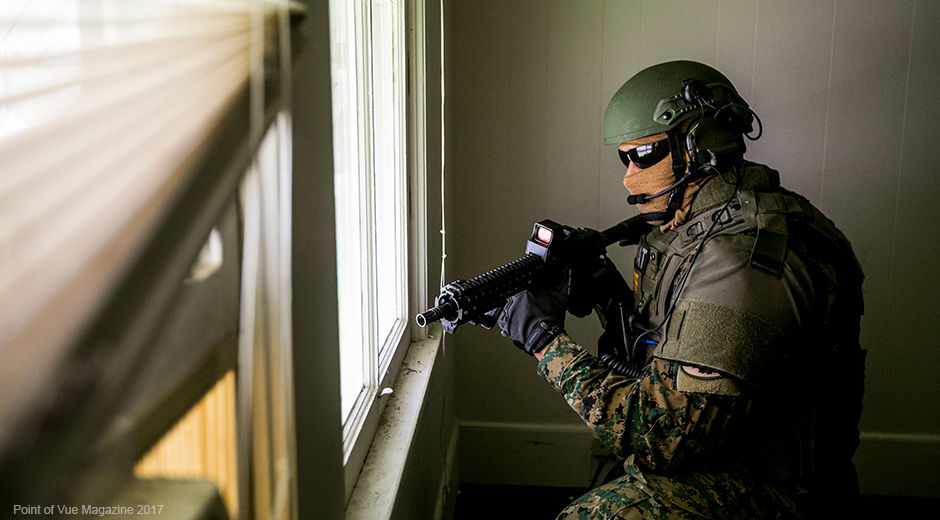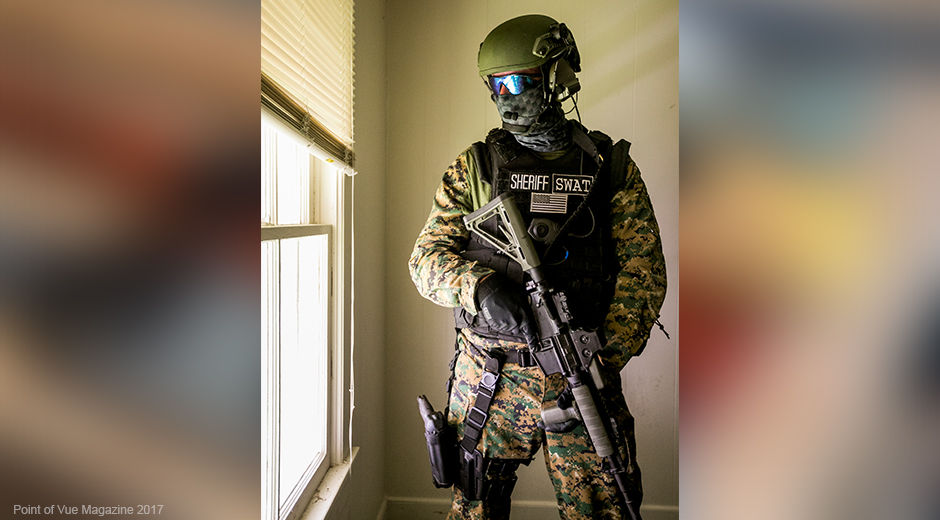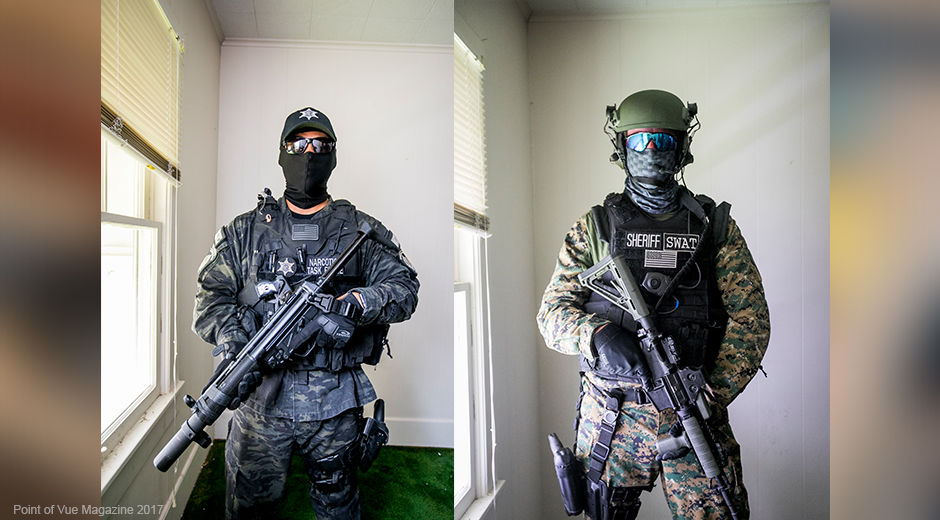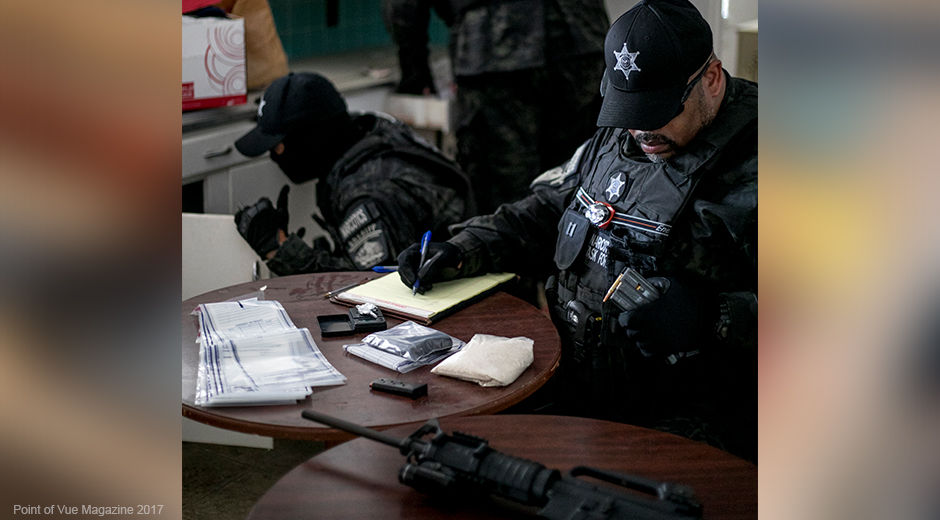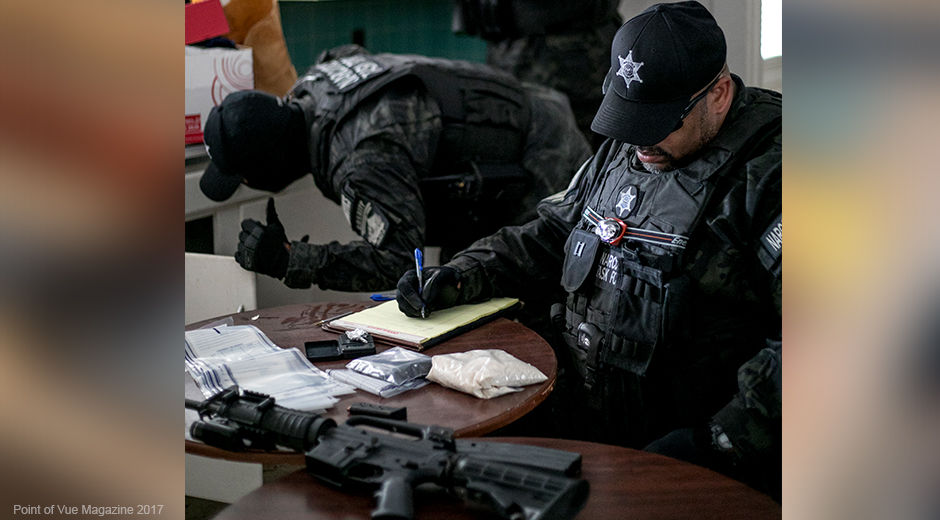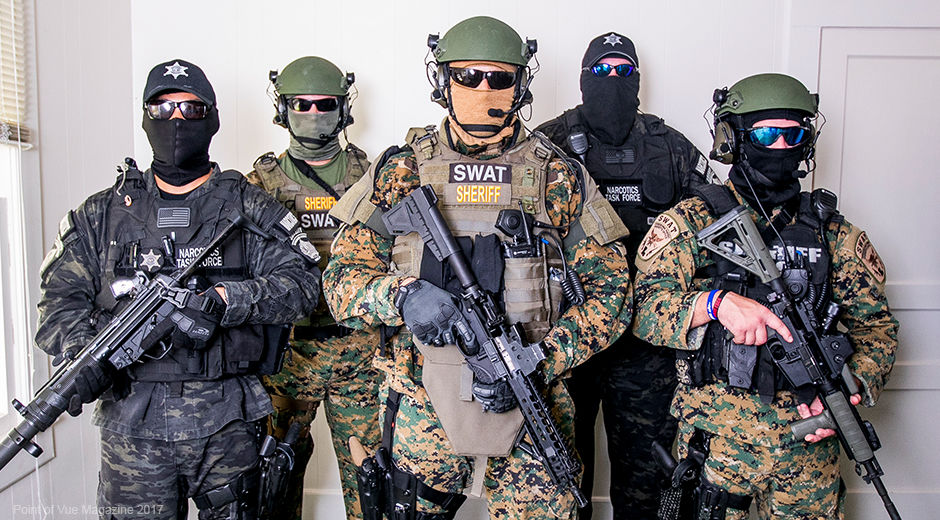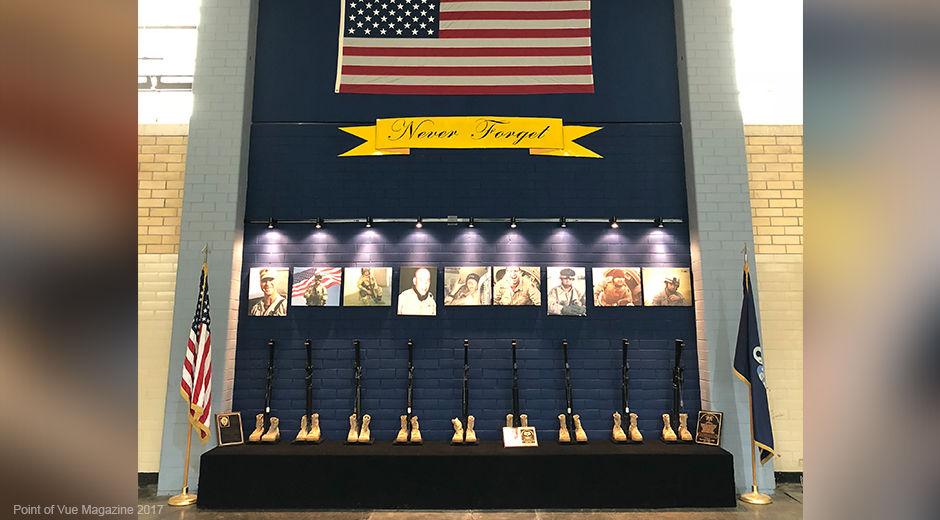
Honoring Our Heroes: The Black Sheep
July 6, 2018
Honoring our Heroes: Air Med
July 6, 2018It’s 4 a.m. in Terrebonne Parish. They always say it’s the darkest before the dawn.
It’s in the darkness of this particular night that the Terrebonne Parish Sheriff’s Office has called SWAT and Narcotics together for a joint mission. Through carefully gathered research and surveillance by other officers, the team has determined that inside this home, nestled inconspicuously in a quiet neighborhood, is where two of their targets are sleeping. The team has carefully reviewed their points of entry to be able to take the occupants of the home by surprise, rather than force. The well-trained team moves quietly into place. The signal is given and the home is breached. A “flash bang” device is detonated and the team moves in. The targeted individuals are apprehended by the team with minimal issues. SWAT clears the home and Narcotics begins their work. The home is swept, top to bottom. Everything is bagged, weighed and logged, to serve as evidence before the courts. Tonight’s mission was a success. Drugs, weapons and dangerous individuals have been removed from our community. But this is just the beginning of the war.
Opioid Crisis Rises
Terrebonne Parish had 53 fatal overdoses in 2017, with more than half of those directly attributable to opioids. In Lafourche Parish there were 15 opioid deaths that year.
The fatalities, however, are like the visible tip of a much larger iceberg. The true number of people actually using opioids and other drugs cannot be truthfully estimated. Numbers are only charted when something goes wrong.
Local hospital statistics show steady increases in the number of people who present with a drug overdose, either in voluntary visit, those instances where they are dropped off by friends, or transported in an ambulance. And the numbers are climbing.
At Leonard J. Chabert Medical Center those numbers rose from 89 to 108 from 2016 to 2017, with 61 emergency room presentations during the first four months of 2018. At Ochsner St. Anne in Raceland the number rose from 22 in 2016 to 33 in 2017. For the first four months of 2018, 17 people ended up in the emergency room.
Terrebonne General Medical Center stats show that from February through December of last year there were 83 presentments of overdose in the emergency department, with 44 between January and April of this year. Thibodaux Regional Medical Center’s numbers rose from 12 to 16 between 2015 and 2016, to 19 in 2017. TRMC was the only local hospital to show a slump this year, with only three emergency room presentments for unintentional overdose through May 2018.
Managed Chaos
Two divisions of the Terrebonne Parish Sherriff’s Office work closely together to wage a calculated war on the drugs and violence it bring to our streets. SWAT and Narcotics divisions take to the streets every day in an effort to keep the bad guys at bay. Their identities might not ever be known and that is for their own safety. These unknown heroes willingly go after the worst of criminals that have begun to take over our streets.
“Controlled confusion. Managed chaos,” says Stephen Bergeron, a captain with TPSO on SWAT, describing the scene at a forced entry. “We go in from multiple different angles. It forces them to pause and it gives us a window of opportunity to get in and make sure things are as safe as possible, not only for us, but also for the people inside. A lot of times you find there are small kids in there, family members, elderly; we have to be able to ensure safety for everyone.”
There’s a lot of planning on the investigation side of the events that require a SWAT type entry. Once the judge signs off on the papers that allow TPSO to do what needs to be done, then the tactical side begins. Major Terry Daigre, Narcotics Commander, often brings in Captain Timothy Soignet and Stephen to work out how things might need to go.
“Preparations are made with Narcotics and SWAT working together,” explains Terry. “We are two separate elements of the investigation though. Narcotics investigations are not all that SWAT does, but it’s a big portion of it. Now that doesn’t leave the other situations out… but often the reason that an individual is running from officers or barracked in a building stems from a form of drug abuse.”
The planning and preparations can take hours to plan, or it can take days to plan. Geography has a lot to do with it. Depending on if the home is in a residential neighborhood, city-type environment versus the rural down the bayou area – its two different game plans for the teams. But every part of the operation has a plan. Admittedly, it doesn’t always go as planned but everything that they can come up with that may happen, there’s a plan of action ready for that, to include worst case scenarios. The SWAT team does have advanced medically trained individuals that are attached to the team, wearing the same uniform, ready if something would happen.
“Terry lets us know the something is coming down the pipe,” explains Stephen, “and we work together to make a plan that covers every base. Sometimes it can go this way, and sometimes it can go that way. We have been ready to go at 4 in the morning before and an hour before go time, Terry shut it down. It wasn’t right.”
Depending on the size and type of structure, SWAT can utilize anywhere from a 6-man to a 15-man operation. “We’ve done multiple 6-man entries,” explains Terry. “Some of the smaller shotgun style houses or a trailer, you aren’t getting many more than 6 inside before we are running over each other. And depending on how what type of neighborhood we are in, what the surrounding area is like, SWAT might stay for a while around the perimeter while Narcotics completes their investigation.”
“and that’s where the show of force comes in,” smiles Tim. “When we have 20 SWAT guys standing outside in an unfriendly neighborhood… people tend to get a little emotional when you are knocking on doors at odd hours. Just the presence of SWAT can help keep the peace at a scene.”
Constantly Evolving
Over the years, the equipment the teams used has evolved. But so has the weaponry of the enemy on the streets.
“We are a lot more advanced safety equipment wise than other equipment,” says Terry, “but the bad guy’s weaponry is far more advanced as well. Everybody has rounds that can penetrate through armor these days.”
“The streets are evolving and they are evolving very fast,” says Tim. “People often comment that the police officers are looking more like military, but quite frankly the equipment that the military offers is the equipment that is keeping our officers safe.”
TPSO owns an armored personnel carrier, referred to as the Bearcat, which is 50 caliber protection. Officers are also all equipped with Narcan, or the injectable drug called Naloxone that serves as a temporary antidote for an overdose, blocking or even reversing opioid effects.
“I personally wanted the Narcan for our officers first as well,” says Terry. “We get exposed to the same drugs and I want to be able to save my guys. Accidental exposure to law enforcement is a little more prevalent than people think.”
The drugs on the street are more dangerous now as well. The tops culprits are meth, heroin and fentanyl. The introduction of fentanyl has increased the stakes for law enforcement in other ways. The drug is so powerful that inadvertent contact while making arrests or assisting with an overdose case can cause illness or even death.
“Someone is holding a bag, no matter the size, a gram to a pound, of a fine white powder,” explains Terry of a seizure of drugs on the scene. “Depending on where that comes from, how its been processed, how its been cut up…. that’s four different things that it could be, just by my looking at it. I have no clue. Cocaine can be cut up that fine, meth can also be very fine. Heroin in its purest form is bright white; fentanyl as well. Because of the hazards of the things that are out there now, I don’t allow field-testing anymore. Bag it up, seal it, and send it to a controlled environment with a scientist and a lab.”
The criminals on the streets are constant evolving. As one is placed behind bars, two pop up in his place. Substances are finding their way into our community by way of China, Mexico and other countries. As the product increases in prevalence on the streets, the price goes down. And as the use increases, so does the violence. But rest assured, our law enforcement agencies are there.
“We all know that there is a lot of risk to what we do,” says Terry, “but we also all signed up for this. A good portion of the tactical team are military veterans. The Sheriff stands firmly behind us when it comes to training and classes. We have a mandatory amount of hours that we train per month for tactical purposes. We push and push for the best so that when these things end in tactical force, we are ready for it.”

